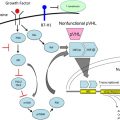Renal cell carcinoma (RCC) is considered a relatively rare malignancy worldwide. Around a third of patients with RCC present with metastatic disease, and among those patients treated with nephrectomy with curative intent, more than one-third develop metastases during postoperative follow-up. Due to the absence of curative medical treatments for metastatic RCC, surgery remains the mainstay of therapy. Surgery plays a key role in two aspects: cytoreductive nephrectomy to remove the primary renal tumor in the presence of known metastatic disease, and metastasectomy to remove distant metastatic foci in patients with metastatic RCC.
Renal cell carcinoma (RCC) is considered a relatively rare malignancy worldwide, with 200,000 new cases of RCC diagnosed yearly and 100,000 patients dying of their disease. Around a third of patients with RCC present with metastatic disease, and among those patients treated with nephrectomy with curative intent, more than one-third develop metastases during postoperative follow-up. Due to the absence of curative medical treatments for metastatic RCC, surgery remains the mainstay of therapy. In this patient cohort, surgery plays a key role in two aspects: cytoreductive nephrectomy to remove the primary renal tumor in the presence of known metastatic disease, and metastasectomy to remove distant metastatic foci in patients with metastatic RCC.
Prognostic factors
As many patients with metastatic RCC tend to have poor survival, several investigators have identified risk factors that are predictive of poor outcomes in patients with metastatic RCC. These risk stratification strategies are being used to stratify patients for entry into clinical trials, and to recommend the appropriate medical and surgical therapy. The risk groupings have been devised in two eras: the cytokine/chemotherapy era and, more recently, the targeted therapy era.
The most commonly used risk grouping in clinical practice today was reported by Motzer and colleagues from the Memorial Sloan Kettering Cancer Center. After compiling data from 670 patients enrolled in 24 local clinical trials, 5 prognostic factors indicative of poor outcomes were discovered: low Karnofsky performance status, low hemoglobin, high lactate dehydrogenase, high corrected serum calcium, and lack of prior nephrectomy. Based on these factors, 3 risk groups were identified: good risk (0 factors), intermediate risk (1–2 factors), and poor risk (3–5 factors). Median survival was 20 months, 10 months, and 4 months, respectively for each of the groups.
Other risk groupings have been devised but are less commonly used. Using patients treated with interleukin-2, Fallick and colleagues identified the following as benefiting the most from up-front cytoreductive nephrectomy clear-cell histology; ECOG performance status of 0 or 1; absence of bone, liver, and central nervous system lesions; adequate cardiac and pulmonary function; and where debulking more than 75% of tumor burden is achievable. Similarly, Leibovich and colleagues reported 5 prognostic factors associated with patient survival: lymph node status, constitutional symptoms, location of metastases, sarcomatoid histology, and thyroid-stimulating hormone level. Based on these factors, patients were stratified into 3 risk groups, where the good-risk group had a 92% 1-year survival rate and the poor-risk group had a 1% 1-year survival rate. Using data from the SWOG 8949 randomized clinical trial, Lara and colleagues identified ECOG performance status of 0, normal alkaline phosphatase, and presence of lung-only metastases to be factors associated with improved outcomes.
Unlike the prior risk groupings that studied patients treated with chemotherapy or immunotherapy, Heng and colleagues recently studied patients treated with targeted therapies (bevacizumab, sunitinib, or sorafenib). Their study identified 6 prognostic factors associated with poor outcomes using retrospective data from patients treated with: Karnofsky performance status less than 80%; time from current diagnosis to current treatment less than 1 year; hemoglobin counts under the lower limit of normal; and corrected calcium, platelet, or neutrophil counts over the upper limit of normal. This study constituted a validation of their original pilot study, and is probably more relevant in the design and conduct of future trials using targeted therapies. Nonetheless, risk grouping based on clinical and simple laboratory criteria alone does not accurately identify true risk, and future genomic studies should help in further refining risk stratification.
Cytoreductive nephrectomy
Immunotherapy Era
In 2001, two randomized phase 3 clinical trials and their combined meta-analysis clearly identified cytoreductive nephrectomy as the standard of care in selected patients with metastatic RCC prior to starting interferon therapy ( Table 1 ). The primary end point of both studies was overall survival, with the secondary end point being response rate.
| Study | Study Type | No. of Patients | Objective Response Rate (%) | Survival (Months) | ||
|---|---|---|---|---|---|---|
| Nephrectomy | No Nephrectomy | Nephrectomy | No Nephrectomy | |||
| Flanigan et al | Prospective phase 3 trial | 221 | 4.2 | 2.5 | 11.1 (OS) | 8.1 (OS) |
| Mickisch et al | Prospective phase 3 trial | 85 | 19 | 11.6 | 5 (PFS) 17 (OS) | 3 (PFS) 7 (OS) |
| Flanigan et al | Meta-analysis | 331 | 6.9 | 5.7 | 13.6 (OS) | 7.8 (OS) |
Flanigan and colleagues randomized 241 patients to either cytoreductive nephrectomy followed by interferon-α2b or interferon-α2b alone (SWOG 8949). Patients were stratified by SWOG performance status (0 vs 1), presence or absence of lung metastases only, and presence or absence of at least one measurable metastatic lesion. Interferon was started at a median of 19.9 days after cytoreductive nephrectomy. Severe complications were noted in 10 patients in the nephrectomy plus interferon group, and in 13 patients in the interferon-only group. Median survival was 11.1 months in the surgery plus interferon group and 8.1 months in the interferon-only group. Response rates were similar between the two groups.
Mickisch and colleagues randomized 85 patients to receive either cytoreductive nephrectomy followed by interferon-α2b or interferon-α2b alone (EORTC GU 30947). Patients were stratified by treating institution, World Health Organization performance status, presence of lung metastases only, and presence of measurable metastatic lesions. Six patients experienced postoperative complications. Five surgical patients and one interferon-only patient had a complete response. Median survival was 17 months in the surgery plus interferon group and 7 months in the interferon-only group. Response rates were similar (19% vs 12%, respectively).
These two randomized studies constitute the basis on which cytoreductive nephrectomy has been used in patients with metastatic RCC, and have continued to do so in the beginning of the targeted therapy era.
A meta-analysis of these two randomized trials showed that overall median survival was longer in the nephrectomy plus interferon group (13.6 vs 7.8 months, hazard ratio 0.69). One-year overall survival in the nephrectomy plus interferon group was 51.9% versus 37.1% in the interferon-only group. Patients with a zero performance status had significantly longer survival. On the other hand, the site of metastases and amount of measurable disease did not affect overall survival.
Further support of these two randomized studies comes from the Surveillance, Epidemiology, and End Results (SEER) database, where Zini and colleagues compared 2447 patients with metastatic RCC who underwent cytoreductive nephrectomy with 2925 patients who did not. Treatment type (nephrectomy vs no nephrectomy), tumor size, and patient age were independent predictors of survival on multivariate analyses. The 1-, 2-, 5-, and 10-year overall survival rate of the patients treated with cytoreductive nephrectomy was 53.6%, 36.3%, 19.4%, and 12.7% compared with 18.5%, 7.4%, 2.3%, and 1.2% for patients who did not undergo surgery, respectively. Patients who underwent cytoreductive nephrectomy had a significant 2.5-fold lower risk of overall and cancer-specific mortality compared with patients who did not receive surgical intervention.
Targeted Therapy Era
Most randomized phase 3 trials of targeted therapies in patients with metastatic RCC enrolled patients with good and intermediate risk, where 85% to 100% of those patients had undergone prior cytoreductive nephrectomy. The only exception is the temsirolimus trial, where patients with poor risk were enrolled, and as such only 67% of those patients had a prior nephrectomy.
There are no data at present to directly show the benefit (or lack thereof) of cytoreductive nephrectomy in the targeted therapy era. This surgery is still being done in selected patients based on data from randomized trials in the cytokine era, as well as retrospective data from the current targeted therapy era ( Table 2 ). Choueiri and colleagues studied 314 patients treated with targeted therapy, and compared 201 patients who underwent cytoreductive nephrectomy with 113 patients who did not. In multivariable analysis, cytoreductive nephrectomy was associated with improved overall survival in the general cohort (19.8 months in patients who underwent nephrectomy vs 9.4 months in those who did not, hazard ratio 0.68), but on subanalysis it was noted that patients with poor risk features derived marginal benefit from surgery, further strengthening the concept of careful selection of patients who should undergo cytoreductive nephrectomy.
| Study | Study Type | No. of Patients | Objective Response Rate (%) | Survival (Months) | ||
|---|---|---|---|---|---|---|
| Nephrectomy | No Nephrectomy | Nephrectomy | No Nephrectomy | |||
| Choueiri et al | Retrospective analysis | 314 | 26.3 | 11.5 | 8.1 (PFS) 19.8 (OS) | 5.5 (PFS) 9.4 (OS) |
| CARMENA | Prospective phase 3 trial | 576 (planned) | Pending | |||
| EORTC | Prospective phase 3 trial | 440 (planned) | Pending | |||
Two ongoing trials are currently being conducted to answer this question in a prospective manner. The CARMENA trial in Europe (NCT00930033) is actively enrolling patients and aims to enroll 576 patients with clear-cell metastatic RCC. This trial is a randomized phase 3 noninferiority trial designed to compare overall survival in patients treated with sunitinib alone with cytoreductive nephrectomy followed by sunitinib. The EORTC has designed a phase 3 randomized trial aiming to investigate the optimal timing of cytoreductive nephrectomy in 440 patients. To achieve this goal, progression-free survival will be compared in patients treated with cytoreductive nephrectomy followed by sunitinib versus sunitinib followed by surgery.
Recently, the authors investigated the effect of targeted systemic therapy on renal tumor response in patients with the primary tumor in place. One hundred and sixty-eight patients with a median follow-up of 15 months were evaluated, and were noted to experience a median maximum decrease of renal tumor size of only 7.1%, at a median time of 62 days. The authors found that patients who experienced a greater than 10% decrease in renal tumor size in the first 60 days of treatment had a more pronounced eventual objective response, as compared with those who did not achieve this milestone (objective response 24.5% vs 7.2%, respectively). However, due to the relatively small number of patients with greater than 10% decrease in renal tumor size ( Fig. 1 ), the authors do not recommend presurgical targeted therapy in patients who are otherwise candidates for up-front cytoreductive nephrectomy, except as part of controlled clinical trials.
Selection Criteria for Cytoreductive Nephrectomy
As the biology and natural history of metastatic RCC is diverse, there are some patients who do not benefit from cytoreductive nephrectomy when routine selection criteria are used. In this patient subset, the risk of surgery and its potential comorbidities is felt to outweigh any benefit that these patients might derive. With this concept in mind, the authors retrospectively studied 556 patients with metastatic RCC treated with cytoreductive nephrectomy, and compared them with 110 patients treated with systemic therapy alone. Seven independent preoperative clinical, laboratory, and radiological variables that were associated with worse overall survival were identified: symptoms related to metastatic disease, low albumin level, high lactate dehydrogenase level, clinical T3 or T4 disease, retroperitoneal adenopathy, and supradiaphragmatic adenopathy. Not surprisingly, patients with 4 risk factors or more who underwent cytoreductive nephrectomy experienced lower overall survival (median 12.2 months), similar to patients treated with medical therapy alone (9.6 months), whereas those with 3 risk factors or less experienced a median overall survival of 22.7 months ( Fig. 2 ).
Cytoreductive nephrectomy
Immunotherapy Era
In 2001, two randomized phase 3 clinical trials and their combined meta-analysis clearly identified cytoreductive nephrectomy as the standard of care in selected patients with metastatic RCC prior to starting interferon therapy ( Table 1 ). The primary end point of both studies was overall survival, with the secondary end point being response rate.
| Study | Study Type | No. of Patients | Objective Response Rate (%) | Survival (Months) | ||
|---|---|---|---|---|---|---|
| Nephrectomy | No Nephrectomy | Nephrectomy | No Nephrectomy | |||
| Flanigan et al | Prospective phase 3 trial | 221 | 4.2 | 2.5 | 11.1 (OS) | 8.1 (OS) |
| Mickisch et al | Prospective phase 3 trial | 85 | 19 | 11.6 | 5 (PFS) 17 (OS) | 3 (PFS) 7 (OS) |
| Flanigan et al | Meta-analysis | 331 | 6.9 | 5.7 | 13.6 (OS) | 7.8 (OS) |
Flanigan and colleagues randomized 241 patients to either cytoreductive nephrectomy followed by interferon-α2b or interferon-α2b alone (SWOG 8949). Patients were stratified by SWOG performance status (0 vs 1), presence or absence of lung metastases only, and presence or absence of at least one measurable metastatic lesion. Interferon was started at a median of 19.9 days after cytoreductive nephrectomy. Severe complications were noted in 10 patients in the nephrectomy plus interferon group, and in 13 patients in the interferon-only group. Median survival was 11.1 months in the surgery plus interferon group and 8.1 months in the interferon-only group. Response rates were similar between the two groups.
Mickisch and colleagues randomized 85 patients to receive either cytoreductive nephrectomy followed by interferon-α2b or interferon-α2b alone (EORTC GU 30947). Patients were stratified by treating institution, World Health Organization performance status, presence of lung metastases only, and presence of measurable metastatic lesions. Six patients experienced postoperative complications. Five surgical patients and one interferon-only patient had a complete response. Median survival was 17 months in the surgery plus interferon group and 7 months in the interferon-only group. Response rates were similar (19% vs 12%, respectively).
These two randomized studies constitute the basis on which cytoreductive nephrectomy has been used in patients with metastatic RCC, and have continued to do so in the beginning of the targeted therapy era.
A meta-analysis of these two randomized trials showed that overall median survival was longer in the nephrectomy plus interferon group (13.6 vs 7.8 months, hazard ratio 0.69). One-year overall survival in the nephrectomy plus interferon group was 51.9% versus 37.1% in the interferon-only group. Patients with a zero performance status had significantly longer survival. On the other hand, the site of metastases and amount of measurable disease did not affect overall survival.
Further support of these two randomized studies comes from the Surveillance, Epidemiology, and End Results (SEER) database, where Zini and colleagues compared 2447 patients with metastatic RCC who underwent cytoreductive nephrectomy with 2925 patients who did not. Treatment type (nephrectomy vs no nephrectomy), tumor size, and patient age were independent predictors of survival on multivariate analyses. The 1-, 2-, 5-, and 10-year overall survival rate of the patients treated with cytoreductive nephrectomy was 53.6%, 36.3%, 19.4%, and 12.7% compared with 18.5%, 7.4%, 2.3%, and 1.2% for patients who did not undergo surgery, respectively. Patients who underwent cytoreductive nephrectomy had a significant 2.5-fold lower risk of overall and cancer-specific mortality compared with patients who did not receive surgical intervention.
Targeted Therapy Era
Most randomized phase 3 trials of targeted therapies in patients with metastatic RCC enrolled patients with good and intermediate risk, where 85% to 100% of those patients had undergone prior cytoreductive nephrectomy. The only exception is the temsirolimus trial, where patients with poor risk were enrolled, and as such only 67% of those patients had a prior nephrectomy.
There are no data at present to directly show the benefit (or lack thereof) of cytoreductive nephrectomy in the targeted therapy era. This surgery is still being done in selected patients based on data from randomized trials in the cytokine era, as well as retrospective data from the current targeted therapy era ( Table 2 ). Choueiri and colleagues studied 314 patients treated with targeted therapy, and compared 201 patients who underwent cytoreductive nephrectomy with 113 patients who did not. In multivariable analysis, cytoreductive nephrectomy was associated with improved overall survival in the general cohort (19.8 months in patients who underwent nephrectomy vs 9.4 months in those who did not, hazard ratio 0.68), but on subanalysis it was noted that patients with poor risk features derived marginal benefit from surgery, further strengthening the concept of careful selection of patients who should undergo cytoreductive nephrectomy.







